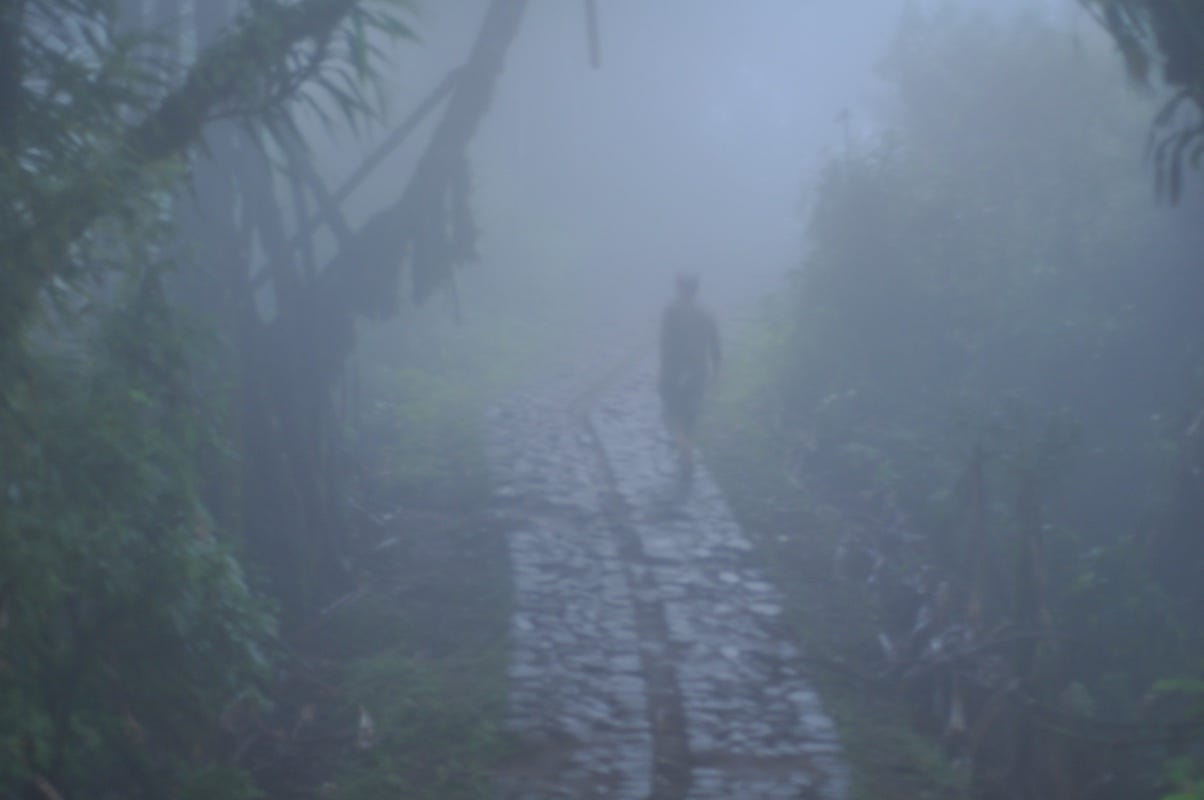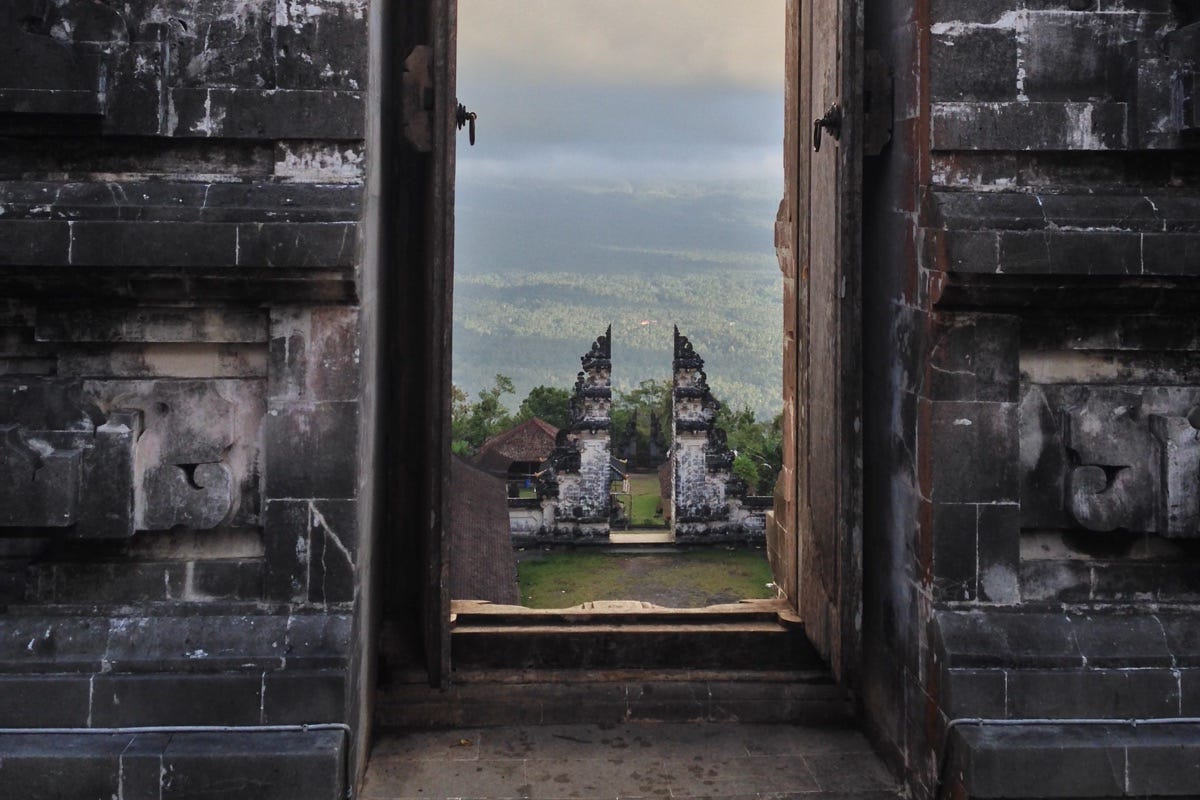A quick word of introduction. My name is Stuart McDonald and this is Couchfish—the perfect tub of ice-cream for the traveller stranded on the couch. The newsletter has both a paid edition which traces a fantasy itinerary through Southeast Asia, and a free one that covers, well, everything else. If you’d like to support me finding more tourism stuff to moan about, please consider becoming a paid subscriber. Thank you.
You know that thing when you’re waiting to board a flight and staff announce “we’re now boarding rows 20-30,” and every person stands to queue up? What is wrong with people? Where’s the fire?
Sometimes it seems that people have an inbuilt desire to stand next to one another. Who hasn’t been in an empty elevator only to have another person get in and stand right beside them? Or sitting, waiting for the above flight in a deserted corner of the terminal only for a complete stranger to come and sit beside them? Or, my forever favourite, the empty cafe, where you sit in a corner only to have some random come and sit beside you. And, of course take an online call without goddam earphones.
“Eco plane,” oh ha haaa Cebu Pacific. Photo: Stuart McDonald.
I’m not anti-human—honest—but I don’t understand these people. I’m not saying there aren’t joys to be had in meeting and getting to know complete strangers, but, well, having the space to determine when I want to avail myself of these bounties would be nice. I’m not here though to whine about planes, lifts and cafes. Rather, I want to zoom out a bit.
Yesterday, I came across a BBC story about an Austrian village named Halstatt. The picturesque village has taken a beating with the overtourism stick, with its 700 residents dealing with as many as 10,000 tourists a day. Considering attempts to better manage visitor numbers, sustainability smart thinker Anne de Jong lamented that in this case perhaps any changes would be too late.
I took a look at Halstatt on Instagram and sure enough, plenty of the pics, taking in the village’s best side, are taken from the near exact same spot. Yet, despite all the pics, few—if any—had other tourists in them. It’s easy to imagine a queue to take said photos going all the way around Halstatt’s oh so pretty lake. Out of shot, out of mind, and all that.
Instagrammers must be fair weather friends, as there were none in sight when I last hit Pura Lempuyang. Photo: Stuart McDonald.
This immediately brought Bali’s Pura Lempuyang to mind. Better known in tourism circles as the “Gates of Heaven,” the temple is a revered site that ended up on the tourism highway thanks to an iconic view it offers up. As ever-needing to adulterate the unadulterated, through the use of a mirror the photo is doubly striking. As with Halstatt, the photos invariably feature no other tourists save perhaps the subject doing a yoga pose or whatever. Most who come, come to take a pic, then leave.
Instagram and TikTok are the two primary flogging horses on this phenomena. As I’ve argued before, I see these as but the latest incarnation of the postcard, a means to satisfy the desire of many to prove they’ve been wherever. Why are they there besides that? I mean sure, who doesn’t want to visit a pretty spot, but beyond that? Good question.
Much of dealing with challenges like this boils down to people management. It is easy to look at a village of 700 people and decide 10,000 tourists a day is a bit excessive, but what is a reasonable number? Half that? A quarter? A tenth? Different parties will have different answers. The out-of-towner who runs a trinket shop selling tourist tat may be keen on no limit. The hotelier wants enough tourists that it doesn’t impinge on their ability to fill their hotel. The retiree resident who has nothing to do with tourism may well prefer zero. Balancing their desires is, well, a balancing act, but in every case, there is a figure out there.
No mirror required. Also, no tourists—this is an old photo, well before the temple hit the tourist charts. Photo: Stuart McDonald.
Once derived, how to implement it? As I wrote recently with regard to Mount Batur on Bali, ticketing—with a finite number of tickets—offers a straightforward approach. Aside from a limit on tickets, this approach needs a cohesive view. Consider Emily Ding’s recent persuasive piece on Indonesia’s Nusa Penida. There, with no overall coordination, all manner of access fees are in play, with it not always clear what is being paid for, or why. The result, tourists, frustrated and weary from incessant toll keeping, give up.
This is less than ideal. Sure it brings revenue in—to where exactly being up for investigation—but it doesn’t address the volume of people. Much as one needs to book a table at a sought after restaurant—sometimes months in advance—why not the same approach for the above temple or lakeside village?
The restaurant is a good example. A decent manager knows how many tables they have and, at capacity, how many staff—chefs, bar-backs, waiters and so on—they need. They know how much food and booze they’ll require and how many tablecloths and napkins they’ll be sending to laundry at the end of the day. This knowledge helps the restaurant—at least in theory—improve both their bottom line and the experience for diners. The same goes for sights and attractions.
Kuching eatery dealing with the Bourdain-effect. Complete madhouse. Photo: Stuart McDonald.
It isn’t like the technology for online ticketing is a dark art. Tickets need not be exclusive in their pricing, indeed in some cases, tickets should be free. The important thing is the ticket—not the price. The other important thing? The ticket needs to be booked by the tourist—not the tour company. Why? To stop hoarding and onselling or scalping. If tourists complain about this being inconvenient, well, they managed to pre-book their flight and accommodation. They’re perfectly capable of booking in advance when it suits them—particularly if it is going to save them money.
Another step would be prolonging the stay. Now I’m sure the poor villagers at Halstatt would baulk at 10,000 people overnighting there. A glance at Google Maps marks a dozen or so hotels in the vicinity, so there is clear limited capacity there. Prolonging the stay need not be overnight though.
Consider that a parking area for buses an hour away on foot would add at least two hours to every visit. There could be various touch points along that hour-long walk to both disperse tourists and extract more dosh from them. When I was in Singapore, one of the things I was working on was rewriting our walking tours. In the case of Little India, there’s a series of houses of worship, more or less in a row walking away from an MRT station. The first temple was full of people who were clearly foreign tourists. By the fourth, I was the only one.
Kali would sort this overtourism thing out in no time. Photo: Stuart McDonald.
Sure, in part it was the middle of the day and I was the only person mad enough to be mapping out a walking tour in that heat, but as matters shook out, the fifth site was the most interesting. In the process of getting there, I had a lassi and later, a coconut, which is to say sometimes being a pleasure delayer pays off, even if in small ways—both for the destination and the punter.
You could argue that factoring in an hour-long walk as a price of access is in itself exclusive. Not all tourists are that mobile, while others would have too tight a timeline to dedicate two plus hours for a photo. For the former, yes, in the fine tuning there would need to be scope to facilitate visits by all. For the latter however, my answer would be “too bad.”
And it is this final answer, “too bad,” that much of the discomfort around all this stuff boils down. Destinations—be them temples, villages or whatever—are leery of turning off the tap. Witness Venice’s forever wincing on levying even a nominal charge on day tourists who are easily the most problematic of its visitors. This is Venice for Hell’s sake—it isn’t like tour operators are going to say, ok lets go to Monfalcone instead.
Should Bali’s Nyepi Ogoh Ogoh processions be ticketed for foreign tourists? Hard yes. Photo: Stuart McDonald.
Boiled down, destinations are actually in the strongest position here. People don’t go to Venice because they want to fly RyanAir or pay for a freakin TUI holiday. They go to Venice because they want to see Venice. The airlines, and to an increasing point, tour operators, are nothing more than dumb pipes. Yet destinations have relinquished door security to bad boy airlines and tour operators who have a vested interest in keeping the doors open 24/7. After all, they’re not the ones who need to wash down the vomit at the end of the night.
Destinations have all the cards and have held them for decades. Now, more than ever, they need to start playing them.
Couchfish is 100 per cent independent and reader-supported. If you’re not already a subscriber, and you’d like to show your support, become a paying subscriber today for just US$7 per month—you can find out more about Couchfish here—or simply share this story with a friend.
Don’t forget, you can find the free podcasts on Apple, Pocket Casts and Spotify as well as right here on Couchfish.


















Share this post